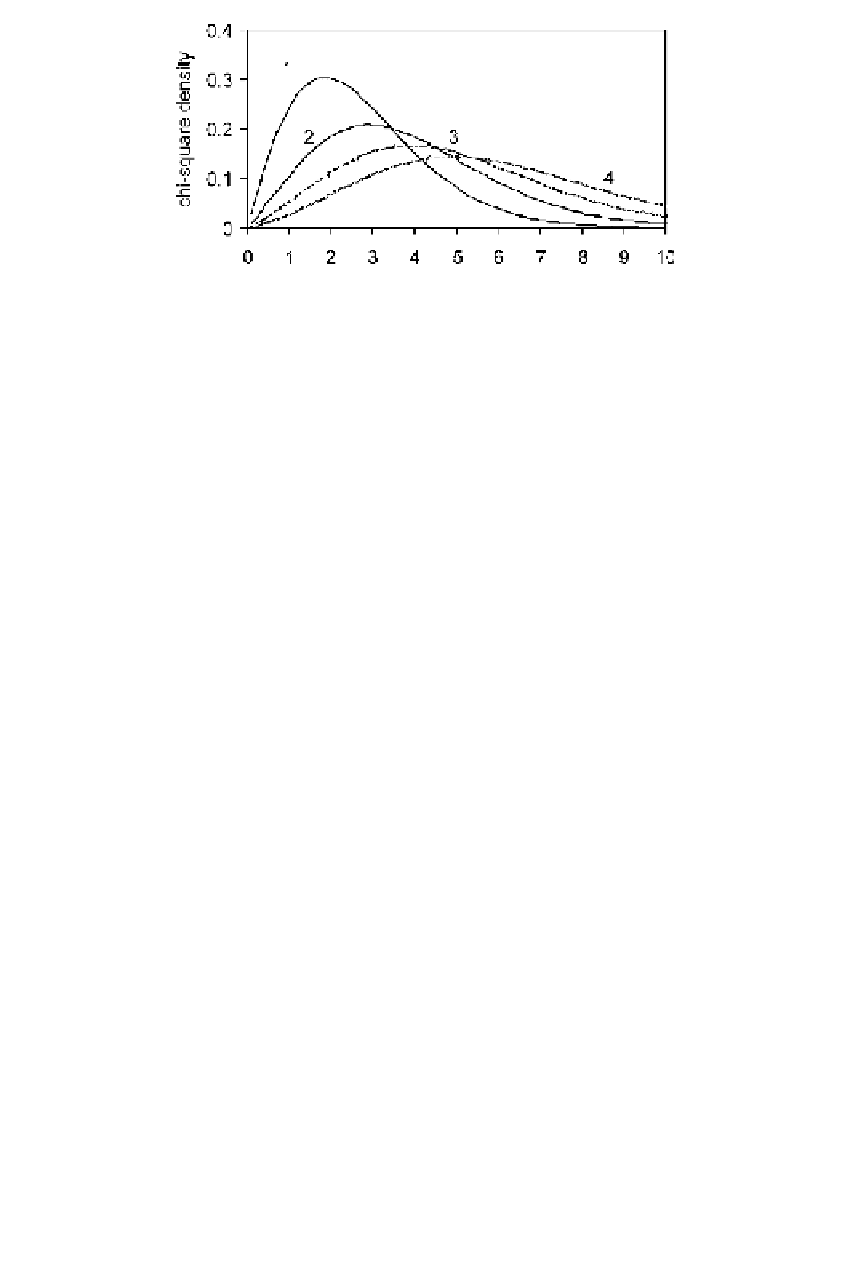Global Positioning System Reference
In-Depth Information
1
2
3
4
5
6
7
8
9
10
11
12
13
14
15
16
17
18
19
20
21
22
23
24
25
26
27
28
29
30
31
32
33
34
35
36
37
38
39
40
41
42
43
44
45
Figure A.2
Chi-square distribution of various degrees of freedom.
[35
w
α
P (
x<w
α
)
˜
=
f(x)dx
=
1
− α
(A.125)
0
Lin
—
-
——
No
*PgE
Eq
uation (A.125) implies that to the right of
w
α
there is the probability
α
; integrating
fro
m
w
α
to infinity gives
α
.If
x
has a chi-square distribution, then this is expressed
˜
r
.
The distribution (A.122) is more precisely called the central chi-square distribu-
tio
n. The noncentral chi-square is a generalization of this distribution. The density
fu
nction does not have a simple closed form; it consists of an infinite sum of terms.
If
by
the notation
x
˜
∼ χ
2
r,
x
has a noncentral chi-square distribution, this is expressed by
˜
x
˜
∼ χ
where
λ
λ
de
notes the noncentrality parameter. The mean is
[35
E(
x)
˜
=
r
+ λ
(A.126)
as
opposed to just
r
for the central chi-square distribution.
The density function of the normal distribution is
1
σ
√
2
e
−
(x
−µ
)
2
/
2
σ
2
f(x)
=
−∞
<x<
∞
(A.127)
π
2
denote the mean and the variance. The notation
2
)
is usu-
where
µ
and
σ
x
˜
∼
n(
µ
,
σ
all
y used. The two parameters
completely describe the normal distribution.
Se
e Figure A.3. The normal distribution has the following characteristics:
µ
and
σ
1. The distribution is symmetric about the mean.
2. The maximum density is at the mean.
3. For small variances, the maximum density is larger and the slopes are steeper
than in the case of large variances.
4. The inflection points are at
x
= µ ± σ
.
2
)
, then the transformed variable
If
x
˜
∼
n(
µ
,
σ





































